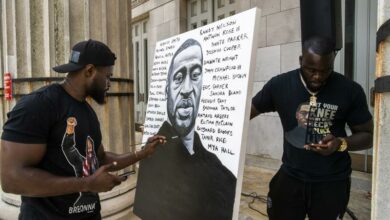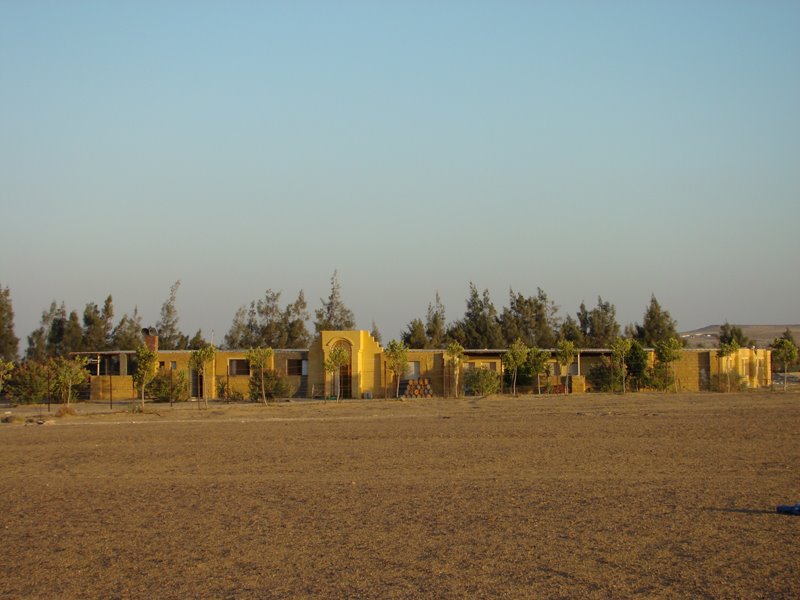Just imagine…Strapped to your seat with six seat-belts in a car so modified that it looks like a war machine rather than an automobile. Trapped in a heavy helmet and surrounded by nothing but desert in all directions. Everything is muted by the roar of the engine as you floor the gas pedal with your right foot to gain full speed. You want to make it to the finish line, and nothing can stand in your way.
Shaheera Mobarak, a 35-year-old Egyptian woman, did exactly that, becoming the first woman in the history of any local desert rally to pilot a car to the finish line.
Mobarak, who was inspired by her brother’s experience in the Desert Challenge Rally 2007, decided to try her own luck with the race. Indeed, in 2010, she transformed her Land Cruiser car into a state-of-the-art rally car with the support of her brother, a group of her friends and her co-pilot, Shady Amin, and the both of them managed to finish the Desert Challenge Rally, which took place earlier in December 2010.
Mobarak, who broke the usual protocol of desert races by becoming a pilot in her first race–most drivers start as co-pilots–is still dreaming big about her newborn passion, and her eyes are shining with excitement as she speaks.
“It was really overwhelming,” she says with a huge smile on her face. As she puts her phone on silent, I realise her ring-tone is the sound of a roaring car engine. “It was a huge sense of achievement. My brother was there, as he was my assistant during the rally, and the first thing I did was to start crying the minute I saw him.”
Reaching the finish line was not an easy task. The day before the race all cars had to be examined and take part in a trial race to choose the order in which the cars would start the race the following day. “We were the last car out on that day, as it was our first time and we hadn't done races before,” says Mobarak. `“We did our first lap and lost our tire on one of the turns, we lost half of our steering, everyone told us to stop, but both [co-pilot] Shady and I decided that we were not going to stop.”
That wasn’t the only challenge Mobarak and her co-pilot had to face. “On the second lap we lost our second front tire and we had zero steering. It was absolute madness. On this day, we had zero knowledge how we managed to finish.”
Later that evening, people were asking Mobarak not to continue with the race. “But it wasn’t an option for us,” she says. “We had to do it and finish to the end. […] We were ready for the next day, and we were up for the challenge.”
Mobarak recalls being extremely nervous before the beginning of the actual rally, especially as they counted down the cars and her turn to start was upon her. “But once I started driving the nervousness was all gone, and it wasn’t excitement anymore, but focusing on what we were supposed to do,” she says.
That day was a test for her friendship with co-pilot and friend Shady Amin. “We trained a little bit before the rally, and we established that we could communicate together.” Mobarak believes “one of the most important things in the rally is the co-pilot; he is more important than anyone else on the team. [Shady Amin] is a brilliant co-pilot and has excellent communication.”
At times, however, she and her co-pilot needed a break from the rally. “We would stop whenever we need to take a minute and decide on what to do next. The car can get a bit tight for both of us, but the idea is to give each other space, and at one point during the rally we stopped and got out of the car the both of us, so we could breath, and then we went back to the race.”
Mobarak had multiple goals ahead of her when she joined the rally. “When I decided to do this I was basically trying to race and reach the finish line in one piece: me, the co-pilot and the car.” She continues: “The larger goal was to be the first Egyptian woman to actually join the rally, drive it and finish it to the end. There have been other [women], but no one has finished the rally before. That was the ultimate goal and we achieved it.”
Being the only lady driver in the Desert Challenge Rally had both its upsides and its downsides. “As a lady, I had an internal struggle with myself–I was doing something that was new for me, and I was the only woman who was doing it in the midst of bunch of guys who were driving me mad,” Mobarak explains. “[My team members] accommodated the fact that I’m an emotional person, and I have a different way of thinking than guys would think.”
As for other racers, Mobarak points out that she never saw this kind of support from anyone before, “I’ve never expected to receive encouragement, tips and stories here and there of things I can do or cannot do,” Shahira says. “The smiles and the cheers at every finish line were out of this world.”
“We had our jokes, as I used to tell them that they needed to open the road for me: Ladies first, you know!”
Sitting in her racing car, which she uses at the moment for personal trips around Cairo. “People in the street stare at my car,” she laughs. "They call it 'The Monster.'"
Mobarak explains proudly that she did not make any adjustments to her car other than the normal changes a car goes through for a rally. “Being a woman did not require me to change anything in my car,“ she says. “The only thing that needed to be done is that my seat needed to be closer to the steer than anyone else.”
December's rally was not just a one-off for Mobarak, who is planning to race again. “There are three races in 2011; two local ones, the Egypt Rally Cup and The Desert Challenge 2011, and there is the Rallye Du Pheronic, which is an international one,” she says.
“The ultimate plan is that after 2011, I will start considering going international. There are rallies that take place in Tunisia and Morocco for women only, so I would like to give it a try.”




